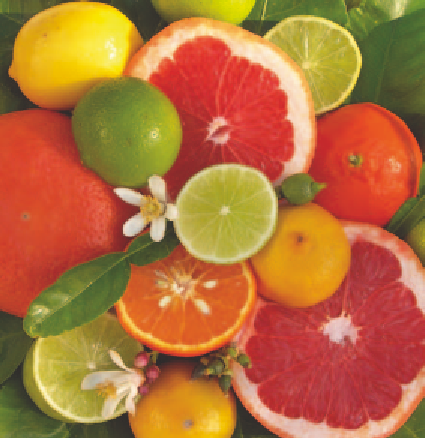Agriculture Reference
In-Depth Information
8
C I T R U S
Citrusfruit
Citrus
spp.,
Fortunella
spp.
These warm climate fruit are as ornamental
as they are fruitful. Every garden that can
grow them should have at least one member
of this group, and with some cultivars
tolerating down to -5
o
C, there should be a
place for one, even if it is in a pot.
is rarely enough heat in these climes to build
the sugars in the fruit. Sour oranges such as
the Seville or Bergamot may be alternatives
and they are also more cold-tolerant than the
sweet oranges.
Always buy virus-tested plants as once these
trees are infected, death of the plant and the
contamination of the soil will ensue. The
tribe are self-fertile so only one plant is
required to produce fruit.
Meyer lemons and kumquats are the most
cold-hardy with Lisbon and Eureka lemons
being the most tender. Oranges grow
surprisingly well in cooler climates but there
Citrus require very little pruning. The
exceptions are lemons that need their long
lanky growths tamed (see below). Train your
tree to three or four major branches once it
has become established, shear them as a
hedge or train as a fan espalier. Keep their
branches well clear of the ground to prevent
soil-borne fungi splashing the plant and clear
any crossing growth.
Rootstocks
Citrus should always be purchased as grafted
plants. Seedlings will not come true to type;
that is, the fruit will most likely be inferior
and it may take many years to fruit. A grafted
tree can be bought in fruit at a year or so old.
Always remove the fruit at planting and until
the plant is three to four years old.
Figure 8.1
The gorgeous variety of citrus fruit.

